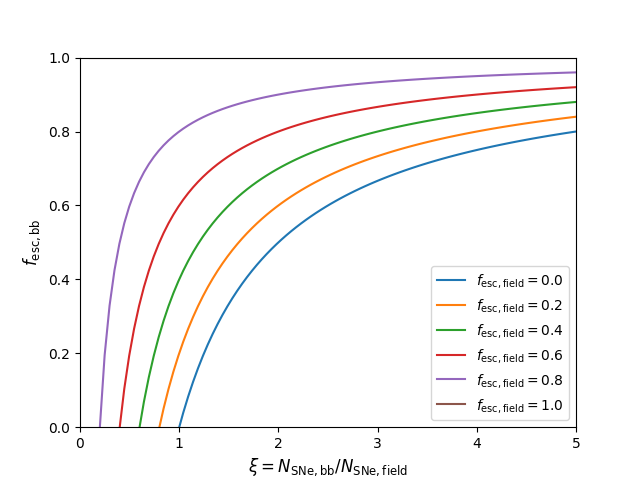Nicole Drakos
Research Blog
Welcome to my Research Blog.
This is mostly meant to document what I am working on for myself, and to communicate with my colleagues. It is likely filled with errors!
This project is maintained by ndrakos
Mechanical Energy Injection Part II
In this post I’m continuing my thoughts on how the mechanical energy injected into the ISM from SNe to increase the LyC escape fraction, but taking an easier approach.
Step 1
Let \(\xi\) by the fraction of SN in our blueberry sample compared to the field. This is something that we will directly measure with our sample.
Things we need to consider are how we will cut the data. For example, is this within a certain mass range?
Step 2
The covering fraction is an effective fraction describing how much of the galaxy is covered by optically thick neutral hydrogen. See Gazagnes et al., where they measured this fraction to understand the connection between the covering fraction and the escape fraction.
A simplified model for how escape fraction is related to the “covering fraction”, \(f_{\rm cov}\) as follows:
\[f_{\rm esc} = 1 - f_{\rm cov}\]This model is probably much too simplified, and likely doesn’t work in cases where there is complex geometry, but I’m going to use it as a starting point.
Step 3
Finally, if we assume that if there is \(\xi\) times the number of supernova, you can clear out \(\xi\) times the amount of gas, you can find
\[f_{\rm cov, bb}= \frac{f_{\rm cov, field}}{\xi}\]This assumes that SNe are primarily responsible for clearing out gas (e.g. ignores things like stellar winds, radiation pressure). It also assumes that SNe are just as effective at clearing out gas in blueberries than as in the field galaxies we are comparing it to. It might be the case that, e.g., compact galaxies are more efficient at clearing out gas.
Step 4
Putting this together,
\[f_{\rm esc,bb} = 1 - f_{\rm cov,bb} = 1 - \frac{f_{\rm cov, field}}{\xi} = \frac{\xi - 1 + f_{\rm esc,field}}{\xi}\]Results
Here is my plot:

I don’t trust this though. For example, when \(f_{\rm esc,field}=0\), how could doubling the supernova clear out fifty percent of the gas? This seems like a logic flaw with Step 3 in my calculations.
Next steps:
- Go through literature, see if I can find sanity checks.
- Go through each of these steps and try to improve on my assumptions/simplifications.